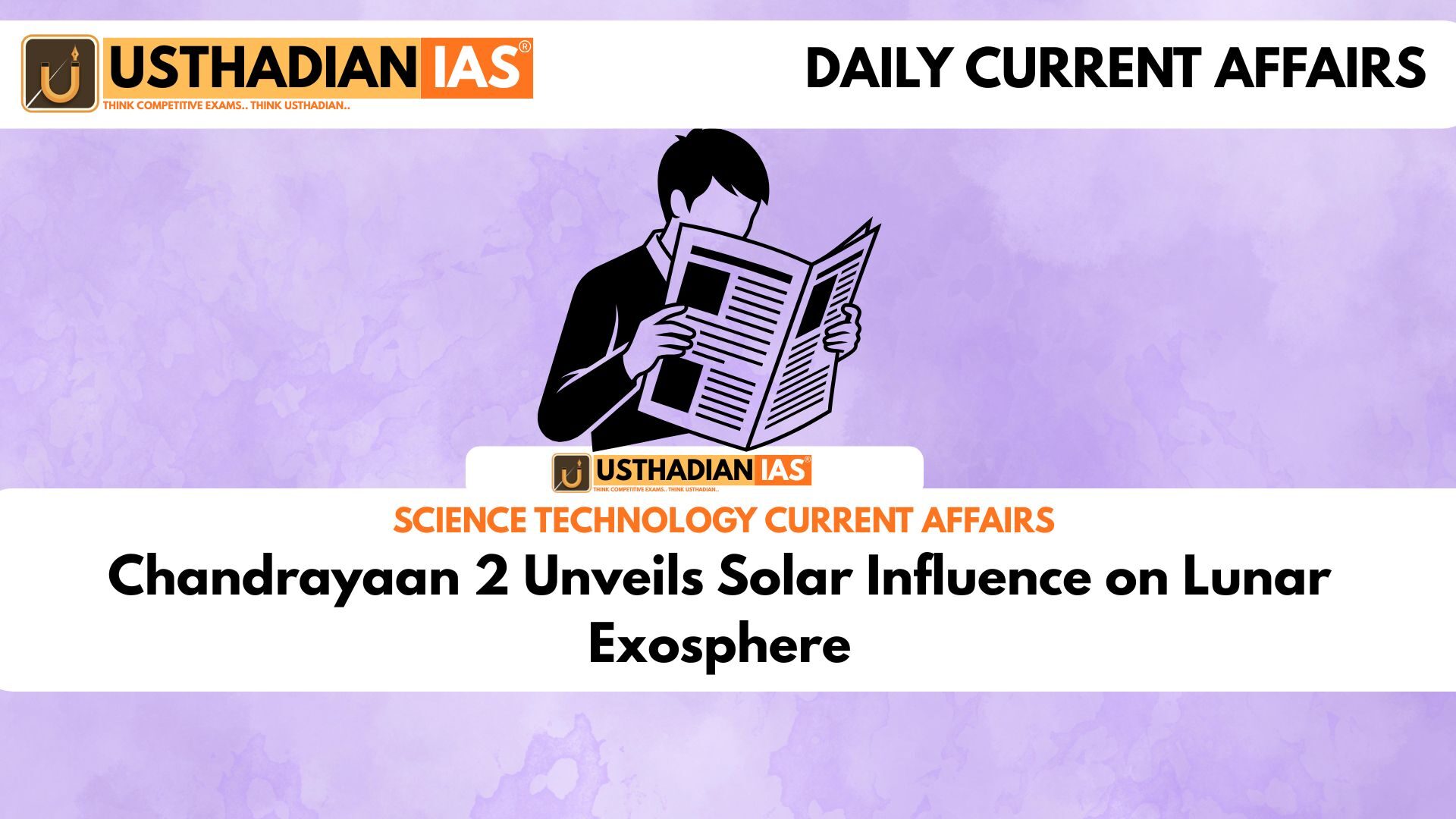Landmark Observation by ISRO
Chandrayaan 2 Unveils Solar Influence on Lunar Exosphere: The Indian Space Research Organisation (ISRO) has achieved a breakthrough with Chandrayaan-2, confirming for the first time that solar eruptions directly influence the Moon’s exosphere. This discovery marks a major leap in understanding lunar space weather, offering crucial insights for future Moon missions and surface operations.
Static GK fact: Chandrayaan-2 was launched on July 22, 2019, from the Satish Dhawan Space Centre, carrying an orbiter, lander (Vikram), and rover (Pragyan).
Understanding Coronal Mass Ejections
Coronal Mass Ejections (CMEs) are powerful outbursts of plasma and magnetic fields from the Sun’s corona. They are composed mainly of hydrogen and helium ions, capable of traveling millions of kilometers through space.
On Earth, CMEs often disrupt satellite operations and power systems, while on the Moon, their effects are unfiltered due to the absence of a protective atmosphere or magnetic field.
Static GK Tip: The Sun’s corona reaches temperatures of over one million degrees Celsius, driving these intense plasma eruptions.
The Chandrayaan-2 Findings
On May 10, 2024, a sequence of CMEs hit the lunar surface, observed by CHACE-2 (Chandra’s Atmospheric Composition Explorer-2) aboard the Chandrayaan-2 orbiter. ISRO reported a tenfold increase in the number density of neutral atoms and molecules in the sunlit lunar exosphere.
This confirmed that solar particles trigger the release of atoms from the Moon’s surface, temporarily altering its atmospheric pressure and density.
Static GK fact: CHACE-2 was developed by the Space Physics Laboratory (SPL) of the Vikram Sarabhai Space Centre in Thiruvananthapuram.
The Moon’s Fragile Exosphere
The lunar exosphere is one of the most delicate atmospheric systems in the solar system. Since the Moon lacks both a global magnetic field and a substantial atmosphere, even minor solar fluctuations cause measurable effects.
ISRO scientists note that the exosphere forms and sustains itself through solar radiation, solar wind, and meteorite impacts. During solar storms or CMEs, high-energy particles increase the rate at which atoms are ejected from the surface, creating temporary atmospheric thickening.
Static GK Tip: The Moon’s exosphere mainly contains helium, argon, neon, and hydrogen.
Strengthening India’s Lunar Science Role
Though the Vikram lander from Chandrayaan-2 did not achieve a successful landing, the orbiter continues to contribute valuable scientific data. Its success reinforces India’s standing in planetary and interplanetary exploration, paving the way for deeper analysis through Chandrayaan-3 and future missions.
ISRO’s growing expertise places India among a limited number of countries capable of conducting advanced lunar and solar interaction studies.
Static GK fact: Only the USA, Russia, China, and India have successfully conducted lunar orbit missions.
Static Usthadian Current Affairs Table
Chandrayaan 2 Unveils Solar Influence on Lunar Exosphere:
| Topic | Detail |
| Mission Name | Chandrayaan-2 |
| Launch Date | July 22, 2019 |
| Launch Vehicle | GSLV Mk III (LVM3) |
| Observation Date | May 10, 2024 |
| Instrument Used | CHACE-2 |
| Observation | Solar CMEs increased lunar exosphere pressure tenfold |
| Lead Organization | ISRO |
| Developed By | Space Physics Laboratory, VSSC |
| Key Scientific Outcome | Direct proof of solar impact on Moon’s exosphere |
| Future Mission | Chandrayaan-3 to expand lunar surface studies |








